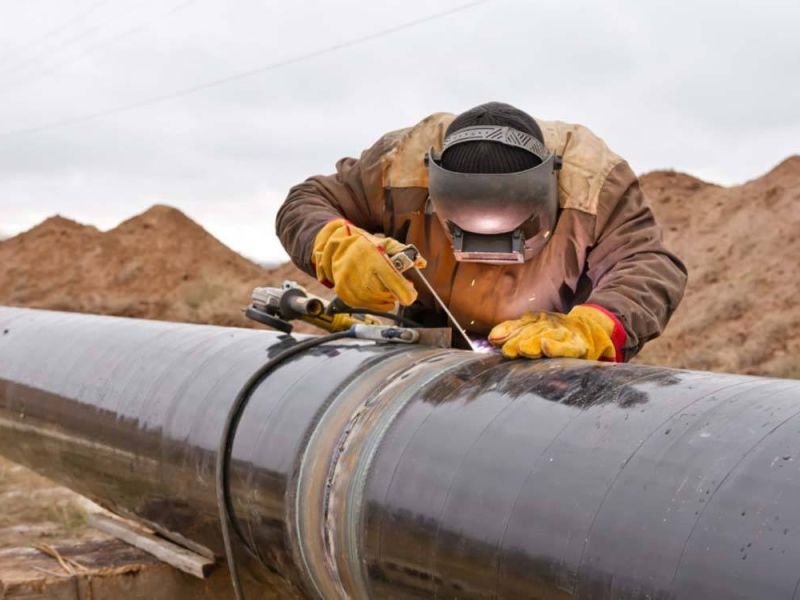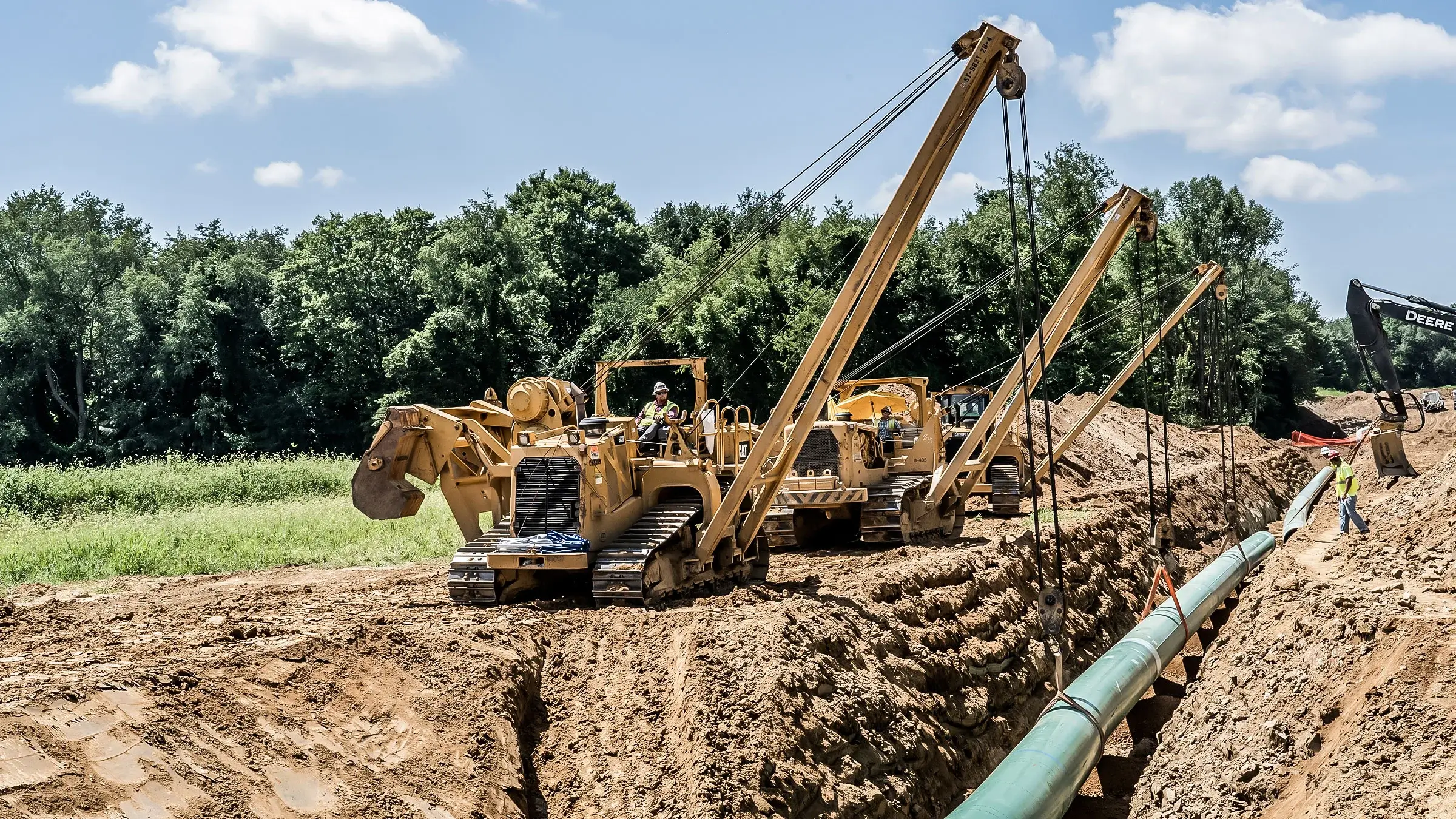Why Engineers Trust Creek Pipe Midland for High-Performance Pipeline Materials
Essential Tips and Finest Practices for Effective Pipelines Installments
Successful pipe setups pivot on critical preparation and adherence to best practices. Recognizing and picking ideal materials pipe sizing are important steps. Appropriate cutting and joining techniques ensure leak-free connections. Furthermore, cautious placement and enough assistance add to the system's honesty. Several forget the relevance of securing and insulation. What other considerable factors could impact the longevity and efficiency of a pipeline system? Discovering these facets reveals a lot more.

Choosing the Right Products for Your Job
When selecting products for a piping setup, it is important to review the certain demands of the task, as various materials use distinct advantages and disadvantages. PVC pipes are immune and lightweight to rust, making them perfect for water drainage systems. Conversely, copper pipelines are known for their longevity and efficiency in warm water applications, though they can be much more expensive.Additionally, galvanized steel pipelines offer toughness and longevity, yet they might encounter rust concerns over time. The atmosphere plays a substantial function in product option; exposure to chemicals or severe temperatures can dictate the choice.Moreover, job spending plan constraints can not be forgotten; some materials may sustain reduced initial expenses yet greater long-term maintenance. Eventually, recognizing the application, environmental conditions, and spending plan factors to consider will direct the decision-making process, making certain the chosen material lines up with the task's total goals and requirements.
Comprehending Pipeline Sizing and Stress Needs
Selecting suitable materials is only one element of an effective piping installment; recognizing pipe sizing and pressure requirements is similarly crucial. Appropriate pipeline sizing assurances that liquid streams successfully without too much stress loss, which can bring about system failings. Variables such as liquid kind, circulation, and temperature level price must be thought about when establishing the appropriate pipeline diameter.Additionally, stress requirements are essential in keeping system honesty. Each application has specific stress ratings that pipes should fulfill to prevent bursts or leaks. Designers usually describe guidelines and criteria to determine the required pressure rankings based upon the intended usage and ecological conditions.Inadequate sizing or overlooking pressure demands can lead to costly fixings and minimized system performance. Because of this, complete analysis and preparation are crucial to achieve ideal cause pipes installments, ensuring longevity and integrity in the overall system.
Understanding Appropriate Cutting and Joining Techniques
Grasping proper cutting and signing up with techniques is crucial for efficient pipeline setups. Picking the best cutting devices and understanding numerous joining techniques can significantly influence the integrity and durability of the system. This area will check out these vital elements to assure successful pipe job.
Cutting Tools Option
Choosing the best cutting devices is important for accomplishing tidy and accurate pipe setups. A selection of reducing tools are offered, consisting of pipeline cutters, hacksaws, and reciprocating saws, each suited to different materials and pipeline dimensions. Pipe cutters are optimal for generating smooth, burr-free sides, while hacksaws offer adaptability for numerous pipeline kinds, albeit with a less clean cut. It is important to review the product being cut; as an example, plastic pipes need various blades contrasted to steel ones. In addition, ensuring the tools are well-maintained and sharp will enhance reducing performance and precision. Inevitably, picking appropriate cutting tools not only improves the installation process but likewise contributes to the general stability of the piping system.
Joining Techniques Summary
After ensuring clean and accurate cuts with the appropriate devices, the following action in pipeline setup includes comprehending the different joining methods available. Usual strategies consist of solvent welding, which uses adhesives to fuse pipes, and mechanical joining, which relies on installations and clamps for safe and secure links. Soldering and brazing are likewise prominent for metal pipelines, using warm to create strong bonds. Each approach has certain applications and material compatibility, making it vital to pick the proper one based on the project requirements. Correct preparation and technique are important to assure leak-free joints. Comprehending these joining approaches not only enhances the long life of the setup but additionally adds to the overall performance and security of the pipes system.
Making Sure Accurate Placement and Assistance
Achieving exact positioning and assistance during pipeline setups is essential for assuring a efficient and sturdy system. Appropriate alignment lessens stress on joints and lowers the risk of leakages or failures gradually. To achieve this, installers must make use of laser positioning devices or levels to establish that pipelines are straight and positioned correctly.Support systems, such as brackets and wall mounts, have to be set up at normal intervals to avoid drooping and movement. The spacing of supports need to follow market criteria, thinking about the type and size of the pipes. Creek Pipe Company LLC.Additionally, installers ought to consider the thermal growth and tightening of products, providing adequate area for activity. Regular examinations during the setup process can help recognize imbalances early, enabling prompt changes. Adhering to these methods will boost the long life and integrity of the piping system, eventually bring about lowered maintenance costs and boosted efficiency
Implementing Efficient Sealing and Insulation
Reliable sealing and insulation are necessary for maintaining the stability of pipe setups. Picking the proper products and using correct setup strategies can substantially minimize the threat of leakages and energy loss. Careful focus to these factors guarantees excellent efficiency and longevity of the piping system.
Choosing the Right Products
When it comes to pipeline installments, choosing the appropriate materials for sealing and insulation is crucial for making certain long-term performance and efficiency. High-quality securing materials, such as silicone or polyurethane sealers, successfully avoid leaks and boost toughness. Insulation materials like fiberglass or foam aid preserve temperature, minimizing energy loss and shielding against condensation. It is vital to pick materials suitable with the particular pipelines and environmental problems to stop degradation gradually. Additionally, taking into consideration elements such as dampness resistance, temperature resistance, and chemical compatibility can greatly affect the overall efficiency of the installment. Eventually, buying suitable securing and insulation products can result in reduced maintenance expenses and better system reliability.

Appropriate Installation Strategies
Correct setup techniques play an essential duty in making best use of the performance of the selected sealing and insulation products. Verifying dry and clean surface areas before using seals stops wetness access and improves adhesion. Using suitable adhesives or sealants, used uniformly and in ample amounts, guarantees efficient sealing versus leaks. In addition, insulation ought to be fitted well around pipes, with all joints and joints firmly sealed visit this site to decrease warm loss and condensation. It is vital to comply with manufacturer standards for installation, taking note of specific temperature level and stress demands. Normal evaluations and upkeep can further improve the longevity and effectiveness of the securing and insulation initiatives, eventually bring about a more trusted piping system.
Conducting Thorough Inspections and Checking
Conducting extensive examinations and testing is necessary in guaranteeing the stability and capability of pipeline installations. This process starts with aesthetic inspections to determine any type of noticeable issues, such as misalignments or rust. Following this, stress screening is essential to verify the system's capability to stand up to functional stress without leakages. Numerous approaches, such as hydrostatic and pneumatically-driven screening, can be used depending on the installation type and environmental conditions.Additionally, non-destructive screening methods, consisting of ultrasonic or radiographic screening, might be made use of to analyze the problem of the pipelines without creating damages. It is essential for inspectors to document findings carefully, as accurate records aid in future evaluations and compliance with safety policies. Regular evaluations and testing not only boost the long life of the piping system yet additionally assure that any type of prospective problems are dealt with proactively, reducing risks associated with pipe failings.
Keeping Your Pipeline System for Durability
Maintaining the long life of a pipeline system needs continuous upkeep along with first examinations and screening. Regular monitoring is crucial, as it aids determine potential right here concerns prior to they intensify into costly fixings. This consists of monitoring for leakages, rust, and blockages, which can endanger system integrity.Routine cleansing is also advised to stop accumulation, especially in older systems. Using suitable cleansing techniques tailored to the pipeline material can boost sturdiness and efficiency.Moreover, executing temperature level control steps can mitigate the dangers related to severe weather that may create expansion or contraction.Documenting upkeep activities help in tracking the system's health and assists in timely interventions.Lastly, engaging specialist services for routine assessments assurances adherence to industry requirements and techniques. By prioritizing these upkeep strategies, the life expectancy of a pipeline system can be significantly prolonged, ultimately resulting in set you back savings and improved efficiency.
Frequently Asked Concerns
What Equipment Are Crucial for Pipeline Installation Projects?
For pipe installation jobs, vital devices consist of pipeline cutters, wrenches, gauging tape, degrees, and sealers. These devices make it possible for accuracy, warranty correct installations, and keep honesty throughout the installment procedure, adding to total task success.

How Do I Determine the most effective Setup Area?
Identifying the ideal installation place entails assessing aspects such as accessibility, distance to existing framework, soil conditions, and neighborhood regulations. Cautious evaluation warranties perfect performance and long life of the pipe systems being installed.
Exist Any Kind Of Safety And Security Precautions to Think About Throughout Installment?
During pipe setup, one need to take into consideration safety precautions such as wearing protective gear, making sure correct air flow, looking for possible hazards, and securing the work area to avoid mishaps, consequently guarding both the installer and the surrounding setting.
Can I Mount Pipelines in Extreme Climate Issues?
Mounting pipelines in severe climate condition presents considerable difficulties. The cold can trigger materials to end up being fragile, while heat may lead to expansion concerns. Correct preventative measures and products are necessary to ensure toughness and performance under these scenarios.
What Common Mistakes Should I Prevent During Installation?
Throughout setup, one ought to avoid usual blunders such as incorrect alignment, inadequate securing, ignoring support frameworks, and making use of incompatible materials. Each of these mistakes can result in leaks, architectural failures, and costly fixings in the future. On the other hand, copper pipes official website are recognized for their toughness and efficiency in warm water applications, though they can be a lot more expensive.Additionally, galvanized steel pipes give stamina and longevity, yet they might face deterioration problems over time. A variety of reducing tools are offered, including pipeline cutters, hacksaws, and reciprocating saws, each suited to various materials and pipeline dimensions - Creek Pipe Pipeline Construction. Pipe cutters are ideal for creating smooth, burr-free edges, while hacksaws use versatility for different pipe types, albeit with a much less clean cut. Accomplishing precise positioning and assistance during pipeline installations is necessary for guaranteeing a effective and sturdy system. For pipe setup tasks, important devices consist of pipe cutters, wrenches, determining tape, degrees, and sealers